Click On Image
For Full Size Image |
Size |
Image Description |
Source |
 R/V Thomas Washington (AGOR-10) R/V Thomas Washington (AGOR-10)
|
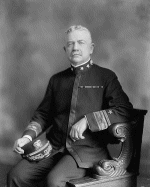 |
123k |
Namesake
Thomas Washington—born on 6 June 1865 at Goldsboro, N.C.—was appointed to the Naval Academy on 17 May 1883. He graduated on 10 June 1887 and, after the required two years of sea duty during which he served on the European Station in Enterprise and Lancaster, was commissioned ensign in 1889. Over the ensuing three years, he served at sea—first in Alliance and then in Endeavor—until he was assigned to the office of the Navy's Judge Advocate General in 1892. Subsequently, after duty on several trial boards for general courts martial at the Norfolk and Washington Navy Yards, he was assigned to a succession of ships— Montgomery, Terror, and Patterson—before joining battleship Indiana in early 1898. He was in this ship when she helped to defeat the Spanish Fleet under Admiral Cervera on 3 July 1898 in the battle of Santiago. After a second tour of duty ashore in the office of the Judge Advocate General, Washington served on the General Board. Ordered thence to the Asiatic Station, he joined the staff of Rear Admiral Robley D. "Fighting Bob" Evans, the Commander-in-Chief, Asiatic Fleet, on 29 October 1902. Quartered in battleship Illinois, the Asiatic Fleet's flagship, he remained on Evans" staff until detached on 1 June 1904. Special duty at the Bureau of Navigation followed his return from the Orient and preceded his assuming command of dispatch boat Dolphin, the vessel which was then serving as the Secretary of the Navy's yacht. Washington next put in another tour with the Bureau of Navigation for duty before returning to sea in 1912 to command, in turn, gunboat Yorktown and cruisers Charleston and Denver over the next two years. On 20 April 1914, Washington—by then a captain— assumed the duties of Hydrographer of the Navy. World War I broke out in Europe less than four months after Washington assumed the Hydrographer's duties, depriving the United States of its external sources of oceanographic and hydrographic information. Washington and his small staff responded by independently gathering the necessary data for use by the United States Navy and Merchant Marine. Relieved as hydrographer on 23 June 1916, Washington was given command of battleship Florida. A few months after the United States entered the war in the spring of 1917, Florida crossed the Atlantic to operate with the British Grand Fleet. The manner in which he carried out this assignment won Washington the Distinguished Service Medal for "exceptionally meritorious service in a duty of great responsibility." Eleven days after the Armistice—on 22 November 1918—he assumed command of Flagship Division 3, Battleship Force 1, Atlantic Fleet, flying his "flag" alternately in yachts Aramis and Nokomis. He subsequently commanded Divisions 2 and 4, successively, of the Atlantic Fleet. Detached from this duty on 9 August, he assumed the post of Chief of the Bureau of Navigation on 11 August, with the accompanying rank of rear admiral. Less than a year later, Washington received orders to duty as Commander in Chief, Asiatic Fleet (CINCAF). He broke his flag in armored cruiser Huron on 11 October 1923 and commanded the Fleet until 14 October 1925. During his tour, the Asiatic Fleet provided support for the United States Army's round-the-world flight in the spring of 1924. Operating from the Kurils to Calcutta, the destroyer squadrons of the Fleet sailed on plane-guard stations, transported supplies and spare parts, and provided radio bearings and communications services for the planes, and thus contributed greatly to the success of the flight. Relieved as CINCAF on 14 October 1925, Washington became Commandant of the Naval Operating Base, San Francisco, Calif., on 19 November 1925, and filled the billet until his retirement on 6 June 1929. Advanced on the retired list to the full rank of admiral on 16 July 1942, Washington died on 15 December 1954 at the Bethesda Naval Hospital, Bethesda, Md.
|
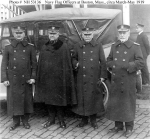 |
124k |
Navy Flag Officers at Boston, Massachusetts, photographed standing beside an automobile, probably circa March-May 1919.
They are (from left to right):
Vice Admiral Robert E. Coontz, Commander, Division 7, Atlantic Fleet;
Rear Admiral Thomas Washington, Commander, Division 2, Atlantic Fleet;
Rear Admiral Hugo Osterhaus, assigned to the Navy Department; and
Rear Admiral Edward W. Eberle, Commander, Division 5, Atlantic Fleet.
US Navy photo # NH 53136 from the collections of the US Naval Historical Center.
|
Bill Gonyo |
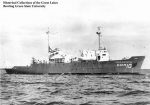
09571010 |
47k |
R/V Thomas Washington (AGOR-10) underway on the Great Lakes near Marinette, WI., circa September 1965.
Historical Collection of the Great Lakes, Bowling Green University |
John Spivey |
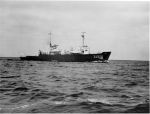 |
146k |
R/V Thomas Washington (AGOR-10) underway, date and location unknown.
US Naval History and Heritage Command Photo # 79129 |
US Naval History and Heritage Command |
 |
45k |
R/V Thomas Washington (AGOR-10) underway, date and location unknown.
US Navy photo |
Robert Hurst |
 Vidal Gormaz (AGOR-60) Vidal Gormaz (AGOR-60)
|
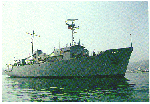 |
30k |
Ex-R/V Thomas Washington (AGOR-10) in Chilean Naval service as Vidal Gormaz (AGOR 60) date and place unknown. |
Photo from Chilean Navy web site |
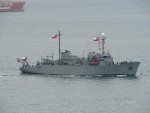
09571011 |
167k |
Vidal Gormaz (AGOR 60) underway in January 2006.
Photo by "SSBN" (real name unknown) Licensed under Creative Commons Attribution-Share Alike 4.0 International deed |
Robert Hurt |
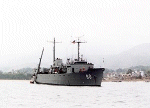 |
10k |
Vidal Gormaz (AGOR 60) date and place unknown. |
Photo from Chilean Navy web site |
 |
29k |
Vidal Gormaz (AGOR 60) underway in the Antarctic, date unknown. |
Patricio Villalobos, Captain (R), Chilean Navy. |
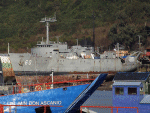 |
542k |
Ex-Vidal Gormaz (AGOR 60) in the scrappers yard at Puerto Montt Bay, Chile, 2012.
Photo courtesy of Jorge Ramirez Zambrano. |
Jorge Krag Milet |
 |
273k |
Ex-Vidal Gormaz (AGOR 60) being broken up in the scrappers yard at Puerto Montt Bay, Chile, 7 January 2013. |
Richard Brito |












